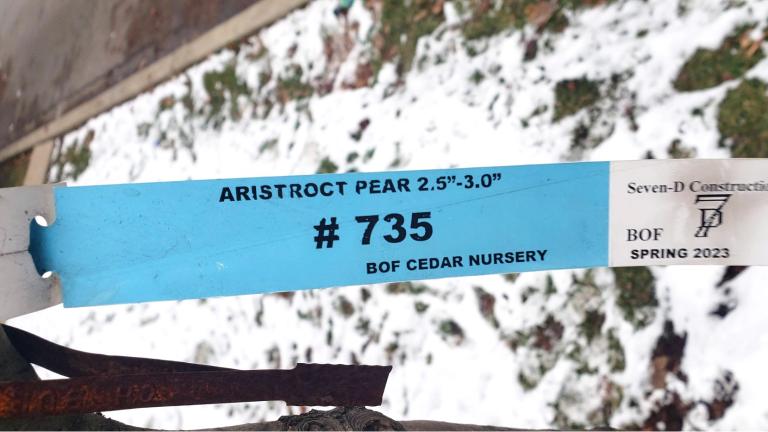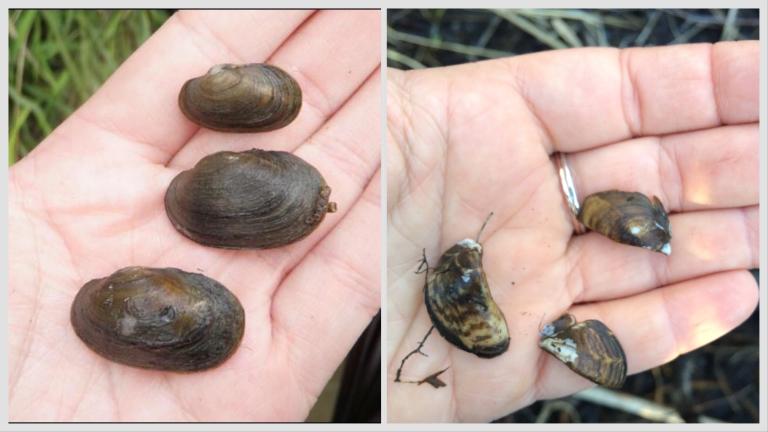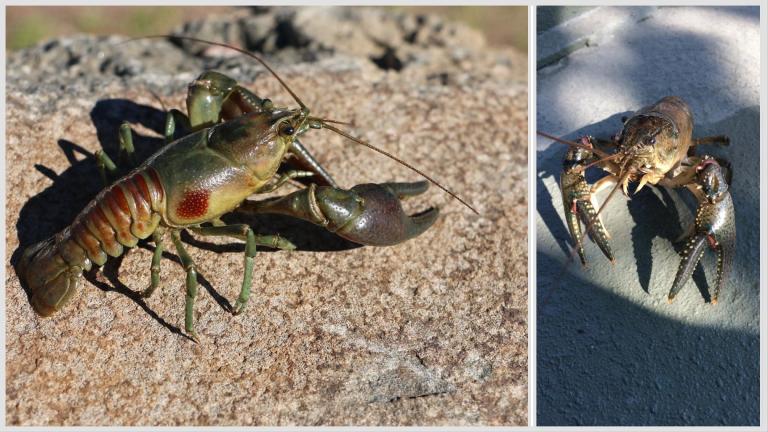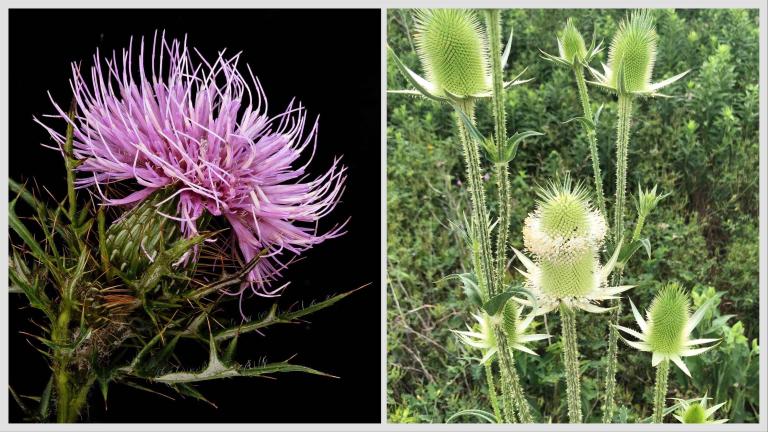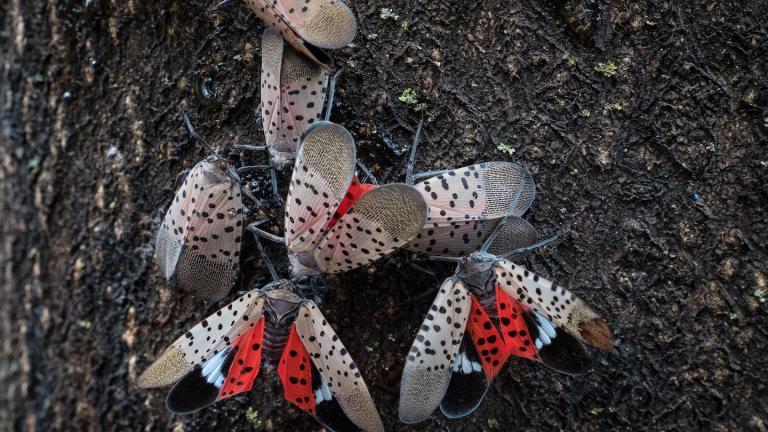
In honor of National Invasive Species Awareness Week, we’ve been posting daily “dupes” — invasives that can easily be confused with native species.
And we saved a doozy for last: invasive phragmites (frag-might-ees), also known as common reed.
This giant grass with the feathery plumed top (Phragmites australis) is the scourge of wetlands across North America. It spreads both underground via root-like rhizomes and aboveground through the proliferation of seeds. In short order it can colonize an area and form a monoculture of 15-foot-tall stems, preventing sunlight from reaching native plants and crowding them out of the picture.
Among the native losers — Phragmites australis.
Confused? So are land managers frequently.
Phragmites australis subsp. americanus is a subspecies native to the U.S. and Canada. The non-native (Phragmites australis subsp. australis) hails from Eurasia and stowed away in ship ballast (see also: invasive mussels), which at the time was soil.
The differences between the two subspecies are subtle, apart from the native’s behavior being the opposite of the invasive’s. The native generally plays well with others and is typically found dispersed among wetland flora instead of dominating it.
Invasive phragmites admittedly can look lovely on a landscape, but at a devastating cost to biodiversity. (Credits, clockwise from top left: Travis McMahon, MIA Consulting, Bugwood.org; John M. Randall, The Nature Conservancy, Bugwood.org; Caleb Slemmons, National Ecological Observatory Network, Bugwood.org; Leslie J. Mehrhoff, University of Connecticut, Bugwood.org; center image, John M. Randall, The Nature Conservancy, Bugwood.org)
The non-native’s spread has been aided by the U.S. highway system and the movement of vehicles across the country. As with many invasives, roadside ditches are fertile ground for the non-native’s seeds, which don’t mind the degraded soil or contaminants like salt or fertilizer runoff.
Anyone who’s ever traveled along I-80/90 near the Illinois-Indiana border will have seen acres and acres of invasive phragmites, looking a bit like amber waves of noxious grain on steroids.
In the fight against phragmites, some land managers have given up on offense and are simply playing defense, conceding territory that’s been lost while vigilantly guarding their highest-quality natural areas.
But there is some promising news.
“We need more tools” is a refrain the U.S. Geological Survey heard when it comes to battling phragmites, and the government responded, said Kurt Kowalski, a USGS research ecologist at the Great Lakes Science Center.
As one of the keynote presenters during an Invasive Species Awareness Week webinar, Kowalski shared an update on the progress of experimental treatments being developed to combat non-native phragmites.
Among the most exciting: Scientists are sequencing the genome of the invasive and native phragmites to see what makes the non-native such a bully.
The quest, Kowalski said, is to then determine: “Can we switch off those traits?”
Results have been “very encouraging” to date and if scientists can crack this nut for phragmites, gene-switching could be used for other invasive plants, he said.
Native phragmites, above, are subtly different from their invasive dupes. Genetic sequencing is underway to determine what makes the both subspecies tick. (Credits, both images: Rob Routledge, Sault College, Bugwood.org)
For those wondering, “Why go to such lengths to control a plant?,” here are some sobering statistics regarding invasives’ ecological and economic costs.
Financially, the annual price tag for managing invasives globally is $423 billion, per the Intergovernmental Science-Policy Platform on Biodiversity and Ecosystem Services.
That figure notably doesn’t include the amount of money spent fighting and recovering from disasters like wildfires fueled by invasive grasses.
But invasives’ toll on ecosystems is even greater.
In the U.S., 34% of plants and 40% of animal species are at risk of extinction, and invasive species are among the top drivers of that loss, according to a report from NatureServe, presented during an Invasive Species Awareness Week session.
“American biodiversity is in crisis,” said Regan Smyth, vice president of data and methods at NatureServe. “If we’re going to maintain diversity of life in this country, addressing invasives has to be part of the solution.”
To report an invasive species sighting, send an email to [email protected]. Provide the following details: location (GPS coordinates, address, crossroads, town — the more info the better), date, your name and contact information, and attach photographs.
Catch up on the entire Invasive Dupes series:
— Part One: Teasel vs. Thistle, Will the Real Native Please Stand Up
— Part Two: Crayfish vs. Crayfish — Seeing Double
— Part Three: A Rose by Another Name Is a Multiflora Disaster
— Part Four: Two Tiny Mussels, One Big Difference
Contact Patty Wetli: @pattywetli | (773) 509-5623 | [email protected]

